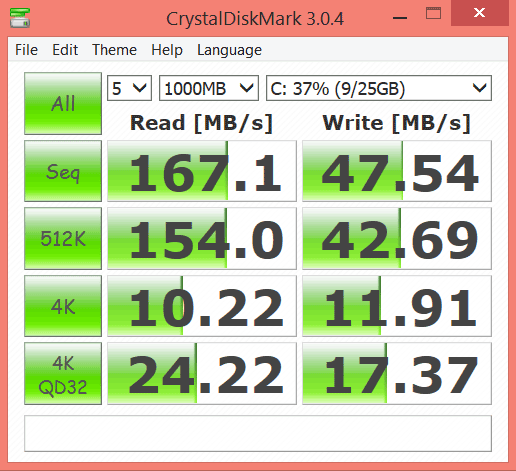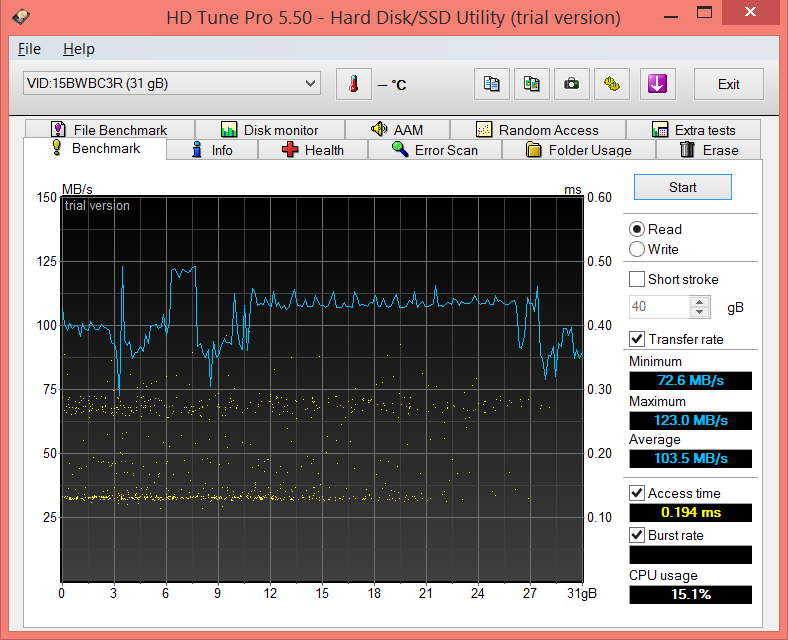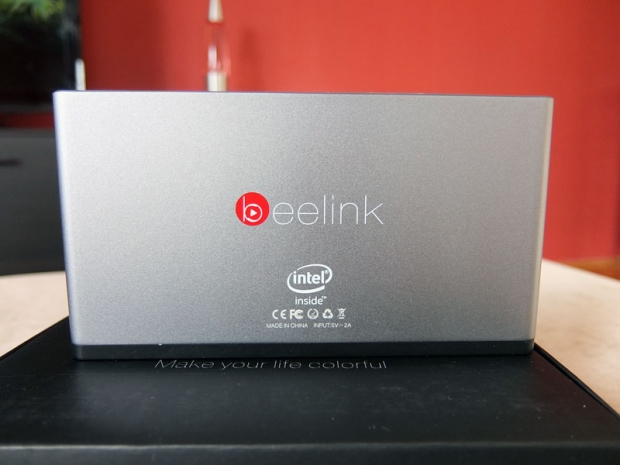Index
Beelink Pocket P1 Specs and Performance
Since we’re dealing with an Atom Z3735F system, there’s really no point in running a lot of chip benchmarks and talking about performance. The chip has been around for quite a while, and we’ve had a chance to try out numerous Bay Trail machines over the past 15 months.
The bottom line is that you’ll get decent entry level performance. Bay Trail SoCs are still powerful enough to deal with basic computing needs – browsing, content consumption in 1080p, Office applications and so on. However, we suspect most Pocket P1s will end up in living rooms rather than offices. Unless you need 4K/UHD support, or like to game in the living room, a Bay Trail processor should do the trick.
Beelink Pocket P1 Specifications:
- Processor: Intel Atom Z3735F, quad-core, 1.33GHz stock, 1.83GHz Turbo, 22nm
- Graphics: Intel HD Graphics, 311MHz base, 646MHz burst
- RAM: 2GB DDR3L
- Storage: 32GB, expandable via microSD card up to 32GB
- Wireless: dual-band 802.11b/g/n, Bluetooth 4.0
- Dimensions: 152.3 x 83 x 11.4mm (5.99 x 3.26 x 0.45in)
- Weight: 223g
- Ports: 2 x USB 2.0, mini HDMI, 3.5mm audio, micro USB in (5V DC)
- Battery: ~4000mAh (capacity not listed in official spec)
Although we didn’t see much point in running loads of benchmarks, we had to try a few, just to see how the system behaves under load.
In 3DMark Ice Storm, the Atom scored 14,403, which is obviously not enough for gaming. However, it’s more than enough for the occasional casual game and content consumption.

Our biggest concern was the storage, since we are dealing with a device built to a budget. Luckily, the results weren’t bad, as a couple of benchmarks demonstrate.

In fact, the results were better than on the Asus T100TA, the first Bay Trail device we had a chance to test. The drive comes from Samsung.
While Bay Trail is roughly 18 months old, it’s still going strong and it will take a while before 14nm SoCs take over. On the upside, we’re not sure new Atoms will be as cheap as Bay Trail parts, so there’s a chance entry-level PCs like this will end up a bit pricier. Although it’s a 22nm part, bear in mind that this particular SKU was designed for tablets, so efficiency is excellent. Running a browser and tinkering with a few files, the system consumed just a few watts.
Overall, performance should not be an issue. Our only concern was heat. After running a few benchmarks (and charging the battery), the device heated up to 40+ degrees Celsius. Since it’s metal, the heat was evenly distributed, which is good news – the chassis acts like a heatsink.




